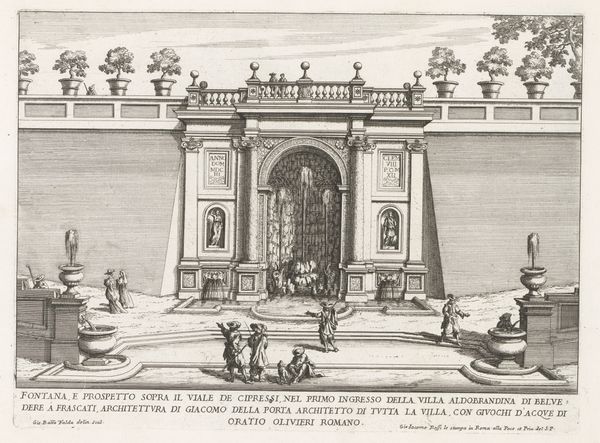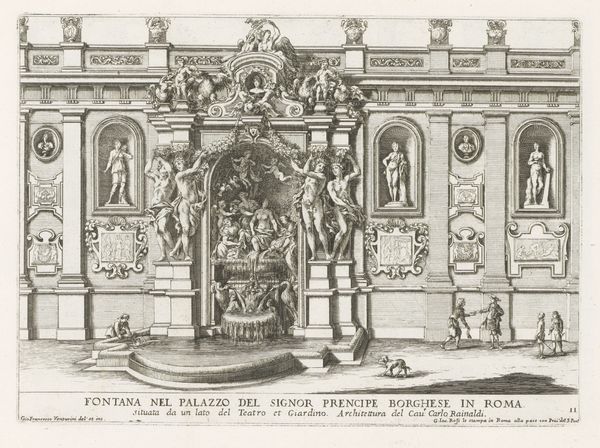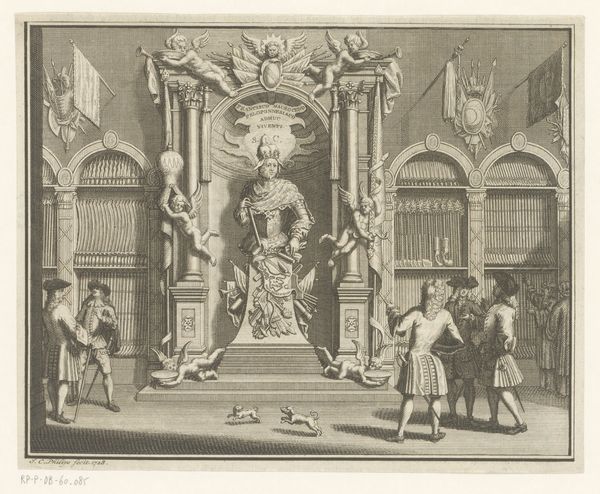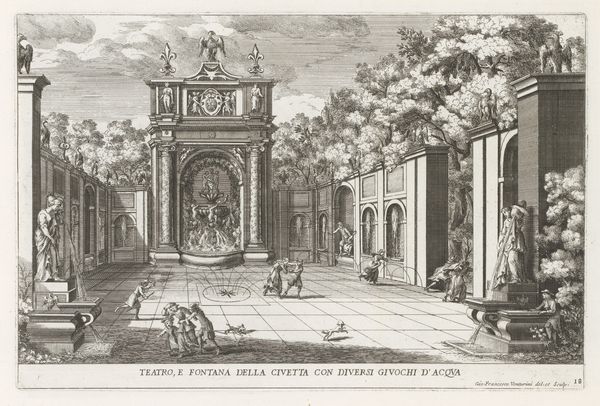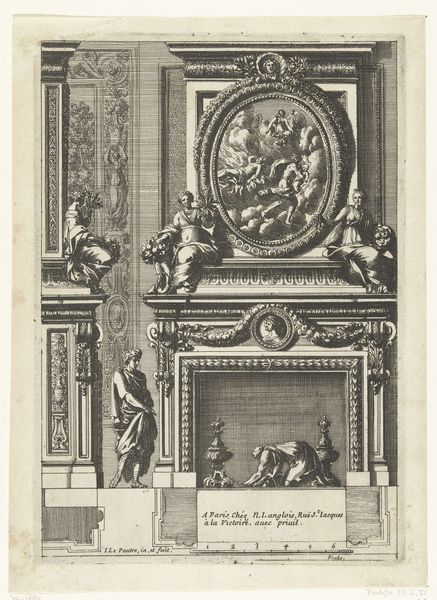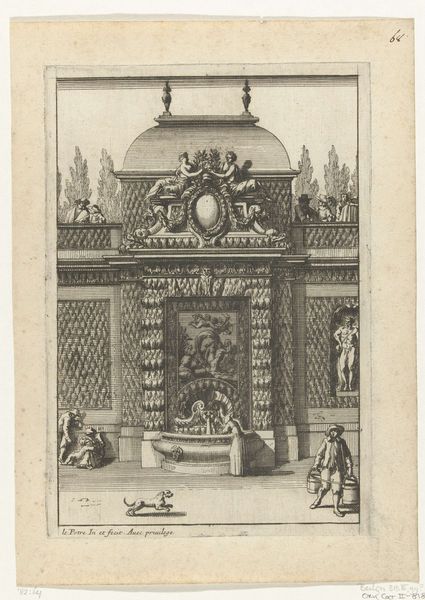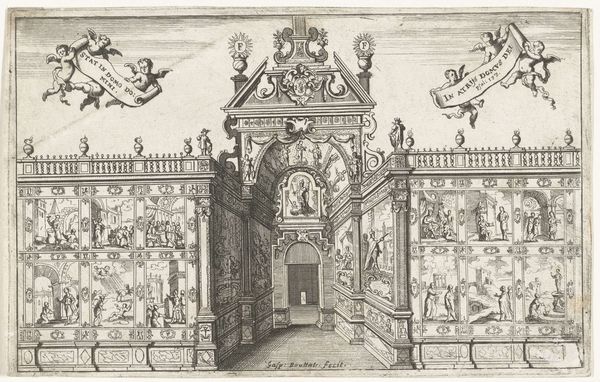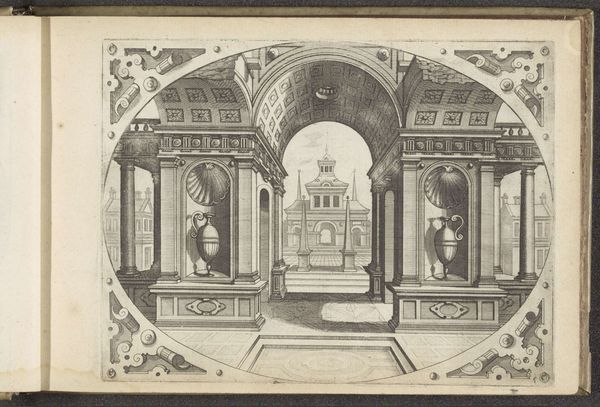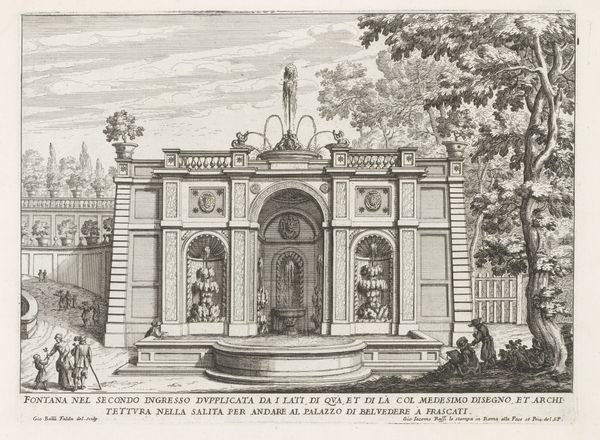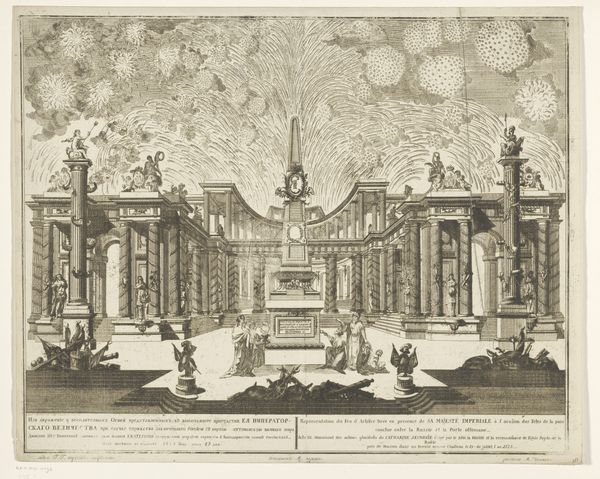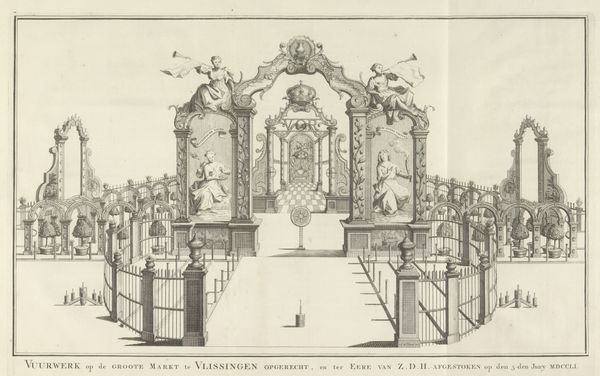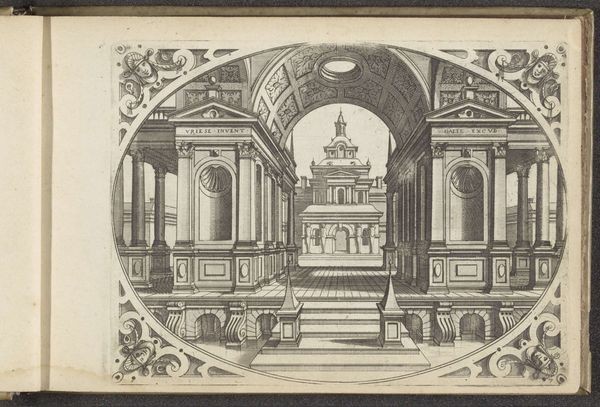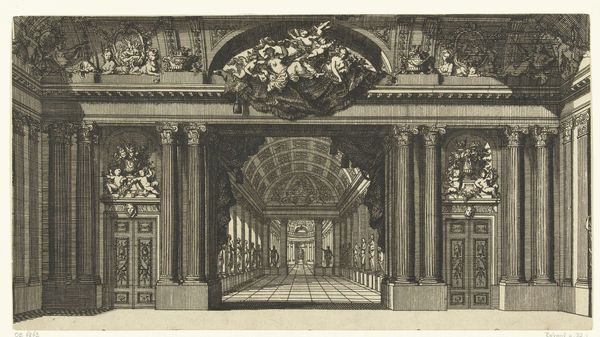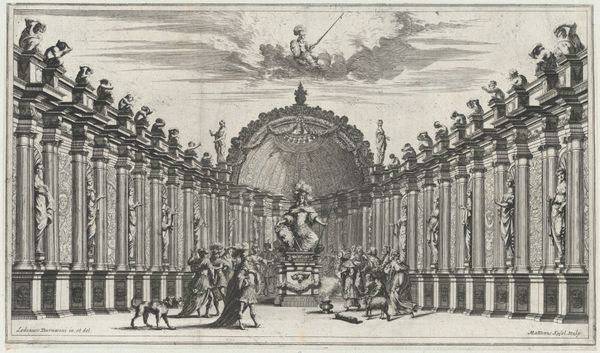
Fontein van Proserpina in de tuinen van de Villa d'Este te Tivoli 1653 - 1691
0:00
0:00
fresco, engraving, architecture
#
garden
#
baroque
#
landscape
#
fresco
#
line
#
history-painting
#
engraving
#
architecture
Dimensions: height 223 mm, width 335 mm
Copyright: Rijks Museum: Open Domain
Editor: Here we have Giovanni Francesco Venturini's engraving, "Fontein van Proserpina in de tuinen van de Villa d'Este te Tivoli," created between 1653 and 1691. It has this almost theatrical feel, a stage set of sorts with the fountain as the central performance. What do you see in this piece, looking beyond the formal qualities? Curator: I see a representation deeply embedded in power dynamics and the objectification of women, Proserpina especially, in this context. The gardens themselves, like many grand estates of the period, were statements of control – control over nature, over resources, and ultimately, over people. This image celebrates the subjugation and display of not just Proserpina, but of the natural world itself. Look at how Proserpina is not celebrated, but seized by the god of the underworld. How do you feel that translates into the gardens themselves? Editor: It's interesting. The way you frame it, the structured gardens, the very deliberate architecture around the fountain, all mirror that forceful abduction, as an attempt to tame something wild, untameable perhaps. It really invites one to explore these sites as symbols of dominance. Curator: Exactly. And consider who had access to these spaces and who was excluded. Gardens like these served as visual reminders of social hierarchies, where the elite literally looked down upon those deemed 'lesser.' How does acknowledging that perspective change your interpretation of the artwork? Editor: It shifts the aesthetic appreciation into a critical observation of history. It becomes less about the beauty of the Baroque style and more about understanding its historical weight, about recognizing how beauty can also mask and reinforce inequalities. I am leaving with so much more to consider, I have never considered this viewpoint of these landscapes and will carry this knowledge forward with me in the future. Curator: Precisely, our role is to examine art through these critical lenses to acknowledge these layered complexities and move towards a more thoughtful conversation.
Comments
No comments
Be the first to comment and join the conversation on the ultimate creative platform.
